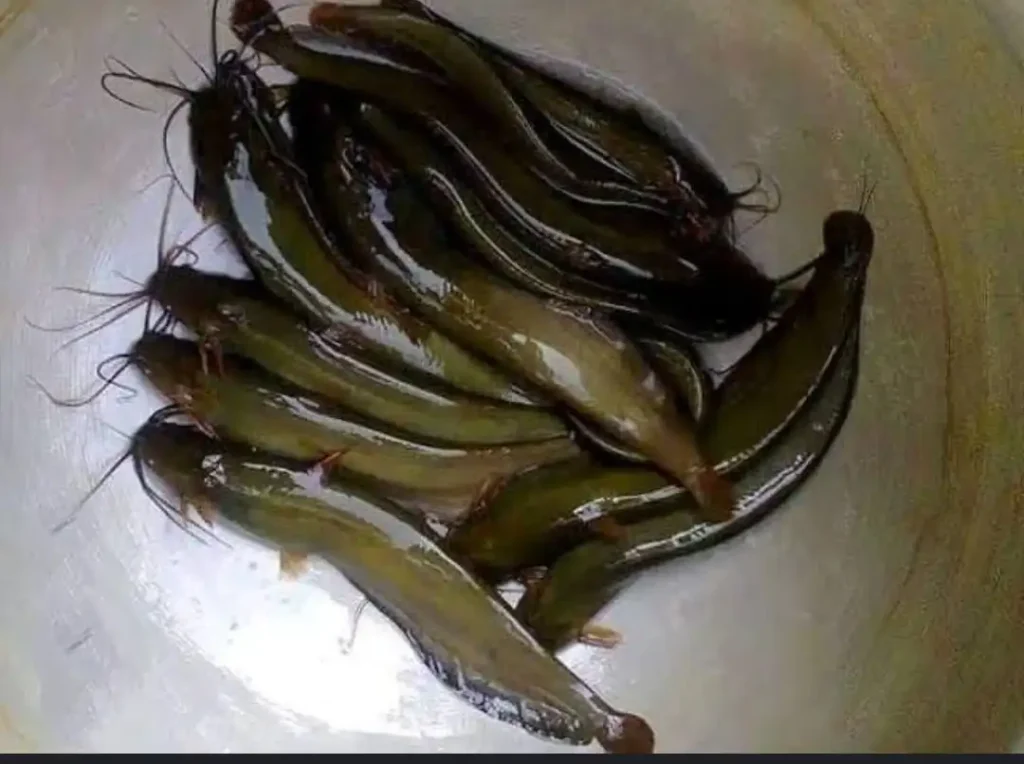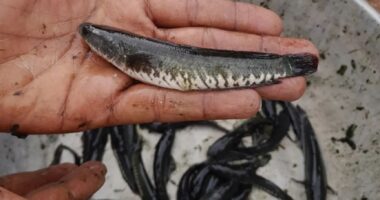In the realm of aquatic wonders, the Singi Fish stands as an intriguing and enigmatic figure. Its unique characteristics, habitat, and significance make it a compelling subject for exploration. Join us on this deep-sea adventure as we plunge into the depths of knowledge about Singi Fish, uncovering its hidden treasures, and understanding why it holds a special place in the hearts of fish enthusiasts and ecologists alike.

What Is Singi Fish?
Singi Fish, scientifically known as stinging catfish, is a remarkable species belonging to the air-breathing catfish family. It is predominantly found in the freshwater bodies of South Asia, including the Ganges, Brahmaputra, and Indus river basins. Renowned for its adaptability and unique features, the Singi Fish has carved a niche for itself in the aquatic world.

- Anatomy and Physical Characteristics
The Singi Fish boasts a distinctive appearance, featuring a slender, elongated body covered in smooth, scaleless skin. Its coloration ranges from shades of brown to olive green, camouflaging seamlessly with its aquatic surroundings. What sets this fish apart are its specialized pectoral fins that act as lungs, allowing it to breathe air.
- Habitat and Distribution
Singi Fish thrives in a variety of freshwater habitats, including slow-moving rivers, lakes, and ponds. Its distribution extends across several South Asian countries, from India and Bangladesh to Nepal and Pakistan. This wide range highlights its adaptability and resilience in diverse environments.
- Feeding Habits
Singi Fish is a carnivorous predator, preying on smaller fish, aquatic insects, and crustaceans. Its voracious appetite and efficient hunting skills make it a crucial part of the aquatic food chain, maintaining ecological balance in its habitat.
Nutritional Value of Singi Fish
The Singi Fish is renowned for its impressive nutritional value, making it a sought-after addition to a balanced diet. Let’s delve into the specifics of the essential nutrients that make Singi Fish a healthy and delicious choice:
- Protein Content
The Singi Fish is celebrated for its high protein content, setting it apart as an excellent source for meeting your daily protein needs. Protein is essential for muscle growth, repair, and overall bodily function. Whether you’re an athlete or simply looking to maintain a healthy lifestyle, Singi Fish can play a pivotal role in your diet.
- Omega-3 Fatty Acids
Omega-3 fatty acids are crucial for heart health, cognitive function, and reducing inflammation in the body. Singi Fish, like its fellow fatty fish, is a rich source of these beneficial fats. Regular consumption of Singi Fish can contribute to improved cardiovascular health and enhanced cognitive function.
- Vitamins and Minerals
Singi Fish boasts a wide array of essential vitamins and minerals, including:
- Vitamin D: This vitamin plays a pivotal role in bone health and supports the absorption of calcium. Additionally, it contributes to a robust immune system.
- Vitamin B12: Vital for nerve function and red blood cell production, vitamin B12 is abundant in Singi Fish.
- Selenium: As a powerful antioxidant, selenium helps protect cells from damage and promotes thyroid health.
- Phosphorus: Essential for maintaining healthy bones and teeth, as well as aiding in energy metabolism.
- Potassium: Vital for regulating blood pressure and maintaining fluid balance in the body.
- Low in Saturated Fat
Singi Fish stands out for being relatively low in saturated fat, a type of fat associated with various health concerns when consumed excessively. By choosing Singi Fish as part of your diet, you can effectively manage your fat intake while savoring the delightful flavors and nutritional benefits it offers.
- Rich Source of Essential Amino Acids
Amino acids are the fundamental building blocks of protein, and Singi Fish provides a diverse range of essential amino acids necessary for various bodily functions. These amino acids support processes like tissue repair, bolstering the immune system, and regulating hormone production.
- Omega-6 Fatty Acids
In addition to its abundance of omega-3 fatty acids, Singi Fish also contains omega-6 fatty acids in well-balanced proportions. This combination of both omega-3 and omega-6 fatty acids contributes to a comprehensive and heart-healthy dietary profile.
Unlocking The Culinary Potential

Singi Fish, is more than just an aquatic species; it’s a culinary gem that can elevate your kitchen creations to new heights. With its unique flavor and versatility, stinging catfish has found its way into the hearts and kitchens of many. Let’s explore the myriad ways you can transform Singi Fish into a delightful culinary delight:
- Singi Fish Curry
Singi Fish curry is a cherished dish in many South Asian cuisines. Create a luscious curry by simmering Singi Fish chunks in a fragrant blend of spices, tomatoes, and coconut milk. The result is a flavorful and comforting dish that pairs perfectly with rice or bread.
- Singi Fish Fritters
Singi Fish fritters, or “Singi Pakoras,” are a crispy and irresistible treat. Coat Singi Fish pieces in a spiced gram flour batter and deep-fry them until golden brown. These crunchy delights make for a delectable appetizer or snack.
- Singi Fish Bharta
Singi Fish Bharta is a unique preparation where Singi Fish is mashed and blended with spices, onions, and tomatoes. The result is a smoky, flavorful side dish that can be served with flatbreads or rice.
- Singi Fish Biriyani
Elevate your biryani game by incorporating Singi Fish. Layer fragrant, spiced rice with marinated Singi Fish, caramelized onions, and aromatic spices. The result is a royal dish that’s fit for a special occasion.
- Singi Fish Tandoori
Give Singi Fish a tandoori twist by marinating it in a yogurt and spice mixture. Grill or roast the fish until it’s tender and infused with smoky flavors. Serve with a cooling yogurt sauce for a delightful contrast.
- Singi Fish Soup
Create a hearty and flavorful soup by simmering Singi Fish with vegetables and aromatic herbs. The fish adds a delicate richness to the broth, making it a comforting option for chilly days.
- Singi Fish Tacos
Embrace fusion cuisine by making stinging catfish tacos. Grill or fry Singi Fish fillets, then serve them in soft tortillas with fresh salsa, shredded lettuce, and a drizzle of zesty sauce. It’s a fusion of flavors that’s both exciting and delicious.
- Singi Fish Sushi
For the sushi enthusiasts, consider using thinly sliced raw stinging catfish in sushi rolls. Its mild, slightly sweet taste pairs wonderfully with sushi rice, nori seaweed, and fresh vegetables, creating a unique sushi experience.
Exploring The Benefits of Singi Fish

Singi Fish, scientifically known as stinging catfish, is a remarkable aquatic species found in South Asia’s freshwater bodies. Beyond its delicious taste, stinging catfish offers a multitude of benefits that make it a valuable addition to both culinary traditions and healthy diets. Let’s delve into the various advantages that Singi Fish brings to the table.
- Rich Source of High-Quality Protein
One of the standout benefits of stinging catfish is its high-quality protein content. Protein is essential for building and repairing tissues, making it a fundamental component of a balanced diet. Whether you’re an athlete aiming to build muscle or simply seeking to maintain overall health, stinging catfish provides a reliable source of protein.
- Heart-Healthy Omega-3 Fatty Acids
Stinging catfish is an excellent source of omega-3 fatty acids, which are well-known for their heart-protective properties. Omega-3s can help reduce the risk of heart disease by lowering blood pressure, reducing inflammation, and promoting healthy cholesterol levels. Regular consumption of stinging catfish can contribute to a healthier cardiovascular system.
- Abundant Essential Nutrients
stinging catfish is packed with essential vitamins and minerals, including:
- Vitamin D: Crucial for bone health and immune system support.
- Vitamin B12: Essential for nerve function and red blood cell production.
- Selenium: A potent antioxidant that protects cells from damage and supports thyroid health.
- Phosphorus: Important for bone and teeth health, as well as energy metabolism.
- Potassium: Vital for maintaining healthy blood pressure and regulating fluid balance.
Incorporating stinging catfish into your diet can help you meet your daily nutritional needs and ensure your body functions optimally.
- Low in Saturated Fat
stinging catfish is a favorable choice for those mindful of their fat intake. It is relatively low in saturated fat, a type of fat associated with various health concerns when consumed excessively. Enjoying stinging catfish allows you to relish a delectable meal without worrying about excessive saturated fat intake.
- Balanced Omega-6 Fatty Acids
In addition to its omega-3 content, stinging catfish contains omega-6 fatty acids in balanced proportions. This balanced fatty acid profile supports overall health and well-being, contributing to a wholesome dietary profile.
- Cognitive Support
The omega-3 fatty acids found in stinging catfish, particularly docosahexaenoic acid (DHA), play a crucial role in brain health. DHA is essential for cognitive function and can aid in maintaining mental clarity and acuity.
Exploring The Side Effects of Stinging Catfish

While stinging catfish is celebrated for its delectable taste and numerous health benefits, it’s essential to be aware of potential side effects associated with its consumption. Like many foods, stinging catfish may not be suitable for everyone, and some individuals may experience adverse reactions. Let’s delve into the potential side effects of Singi Fish:
- Allergic Reactions
One of the primary concerns with stinging catfish consumption is the risk of allergic reactions. Some individuals may be allergic to fish in general, and stinging catfish is no exception. Common symptoms of fish allergies include skin rashes, itching, swelling, breathing difficulties, and digestive issues. If you suspect a fish allergy, it’s crucial to seek medical attention immediately.
- Mercury Content
Fish, including stinging catfish, can contain varying levels of mercury, a heavy metal that can be harmful to human health, especially in excessive amounts. Pregnant women, nursing mothers, and young children are advised to limit their consumption of fish high in mercury to avoid potential developmental issues. It’s essential to be mindful of mercury content and consume stinging catfish in moderation, especially if you fall into one of these categories.
- Digestive Discomfort
Some individuals may experience digestive discomfort after consuming stinging catfish or any type of seafood. This can manifest as indigestion, stomach pain, bloating, or diarrhea. If you’re prone to digestive issues or have a sensitive stomach, consider how stinging catfish affects you and adjust your consumption accordingly.
- Parasitic Infections
Like many freshwater fish, stinging catfish can carry parasites. Consuming raw or undercooked stinging catfish increases the risk of parasitic infections. To mitigate this risk, it’s essential to ensure that stinging catfish is thoroughly cooked before consumption.
- Bone Hazards
Stinging catfish is known for its small, fine bones that can pose a choking hazard, especially for young children. It’s essential to exercise caution when serving stinging catfish to children and remove any bones carefully to prevent accidents.
While stinging catfish offers numerous health benefits and is a delicious addition to many cuisines, it’s essential to be aware of the potential side effects associated with its consumption. Allergic reactions, mercury content, digestive discomfort, parasitic infections, and bone hazards are considerations to keep in mind. If you have specific dietary concerns or medical conditions, it’s advisable to consult with a healthcare professional or nutritionist before including stinging catfish in your diet. By being informed and mindful of potential side effects, you can enjoy the flavors and benefits of stinging catfish safely.
Ecological Role
stinging catfish plays a crucial role in maintaining the ecological balance of its habitat. As a carnivorous predator, it preys on smaller fish, aquatic insects, and crustaceans. This helps control the population of smaller aquatic species, preventing overpopulation and ensuring the health of freshwater ecosystems.
While the stinging catfish is known for its adaptability, it faces threats due to habitat degradation and overfishing. Conservation efforts are underway to protect this species and its natural habitat. Preserving the stinging catfish is essential not only for cultural reasons but also for the ecological balance it helps maintain.
How to Grow Singi Fish

- Understanding stinging catfish
Before diving into the cultivation process, it’s crucial to familiarize yourself with Singi Fish. These freshwater catfish, are known for their distinctive appearance and adaptability to various environments. Their unique air-breathing capability makes them a fascinating species to raise.
- Setting Up the Habitat
Creating the right environment is the foundation of successful Singi Fish growth. Start by selecting a suitable aquarium or pond with ample space. Ensure the water temperature, pH levels, and water quality are within the preferred range for this Fish.
- Water Quality Maintenance
Maintaining pristine water quality is paramount. Invest in a good filtration system and perform regular water changes to remove toxins and maintain optimal water parameters. Stinging catfish thrive in clean water.
- Feeding stinging catfish
This Fish are omnivorous and have a hearty appetite. Their diet should include a combination of high-quality fish pellets, live or frozen foods like worms and brine shrimp, and occasional vegetable matter. Ensure a well-balanced diet for their growth and health.
- Ideal Tank Mates
Consider the compatibility of other fish species in your tank or pond. This Fish can coexist with many other species, but it’s essential to choose non-aggressive companions to avoid stress and conflict.
- Breeding stinging catfish
If you’re interested in breeding this Fish, create separate breeding tanks with appropriate nesting sites. this Fish are known to be dedicated parents, so provide a secure environment for their fry.
- Monitoring Health
Regularly inspect your Singi Fish for any signs of illness or distress. Quarantine new fish additions to prevent potential disease outbreaks, and be prepared with medications and treatments if needed.
- Growth and Size
This Fish can reach a considerable size, so ensure that your tank or pond can accommodate their growth. Proper nutrition and a spacious environment will contribute to healthy and robust this Fish.
- Sustainability
Consider sustainability practices in your stinging catfish cultivation. Avoid overstocking and maintain ecological balance in your aquatic ecosystem.
The adaptability of stinging catfish has led to its inclusion in aquaculture practices. Its rapid growth rate and ability to thrive in captivity make it an attractive choice for fish farming. Entrepreneurs and farmers are exploring the economic potential of breeding stinging catfish for commercial purposes, contributing to the region’s aquaculture industry.
Conclusion
Stinging catfish is not just an aquatic species; it’s a cultural symbol, an ecological cornerstone, and a source of sustenance. Its adaptability, cultural significance, and ecological importance make it a subject worthy of exploration and conservation. As we continue to uncover the mysteries of this remarkable aquatic creature, let us remember the need to protect and preserve its habitat for generations to come.
FAQs
Is the Singi Fish endangered?
This Fish is currently not classified as endangered, but conservation efforts are crucial to ensure its continued survival.
Can the Singi Fish be kept as a pet in home aquariums?
This Fish is primarily a freshwater species found in natural habitats and is not commonly kept as a pet in home aquariums due to its specific requirements.
What is the cultural significance of the Singi Fish in religious ceremonies?
In many cultures, this Fish symbolizes prosperity and abundance, and its presence in religious rituals is believed to bring good fortune.
How can I contribute to the conservation of the Singi Fish?
You can support conservation efforts by spreading awareness, advocating for sustainable fishing practices, and working towards the protection of its natural habitat.
Is Singi Fish consumption safe for health?
This Fish is a nutritious source of food, but it’s essential to ensure that it is sourced from clean and unpolluted waters to maintain its safety for consumption.






